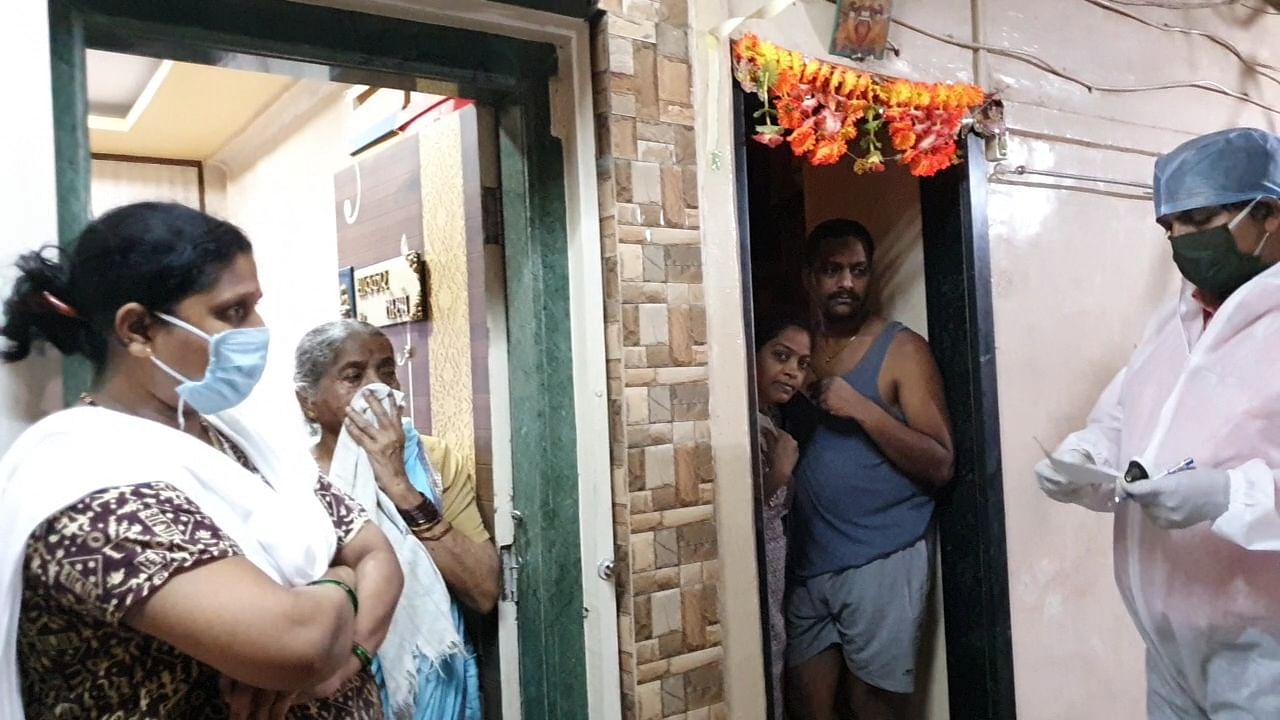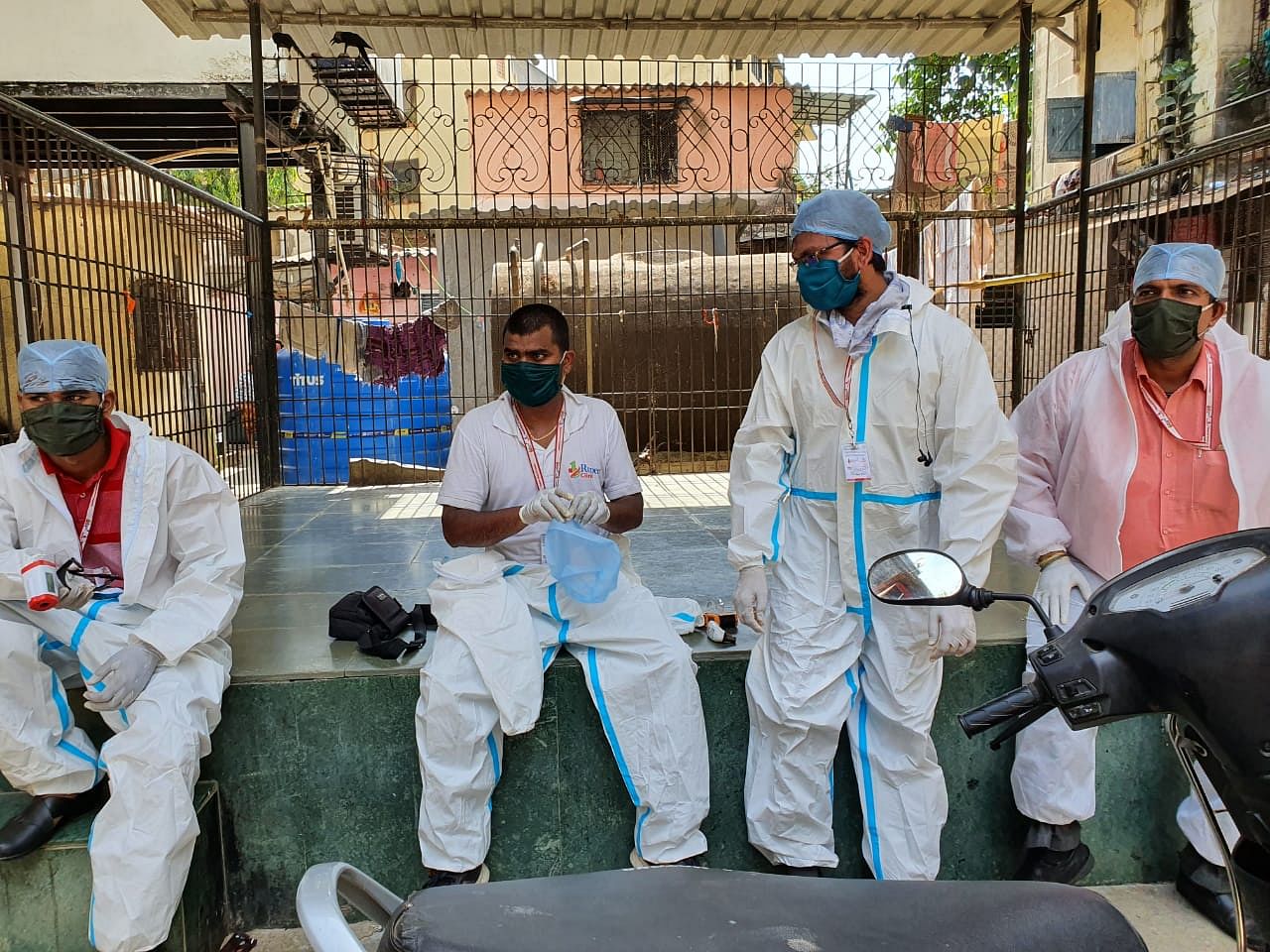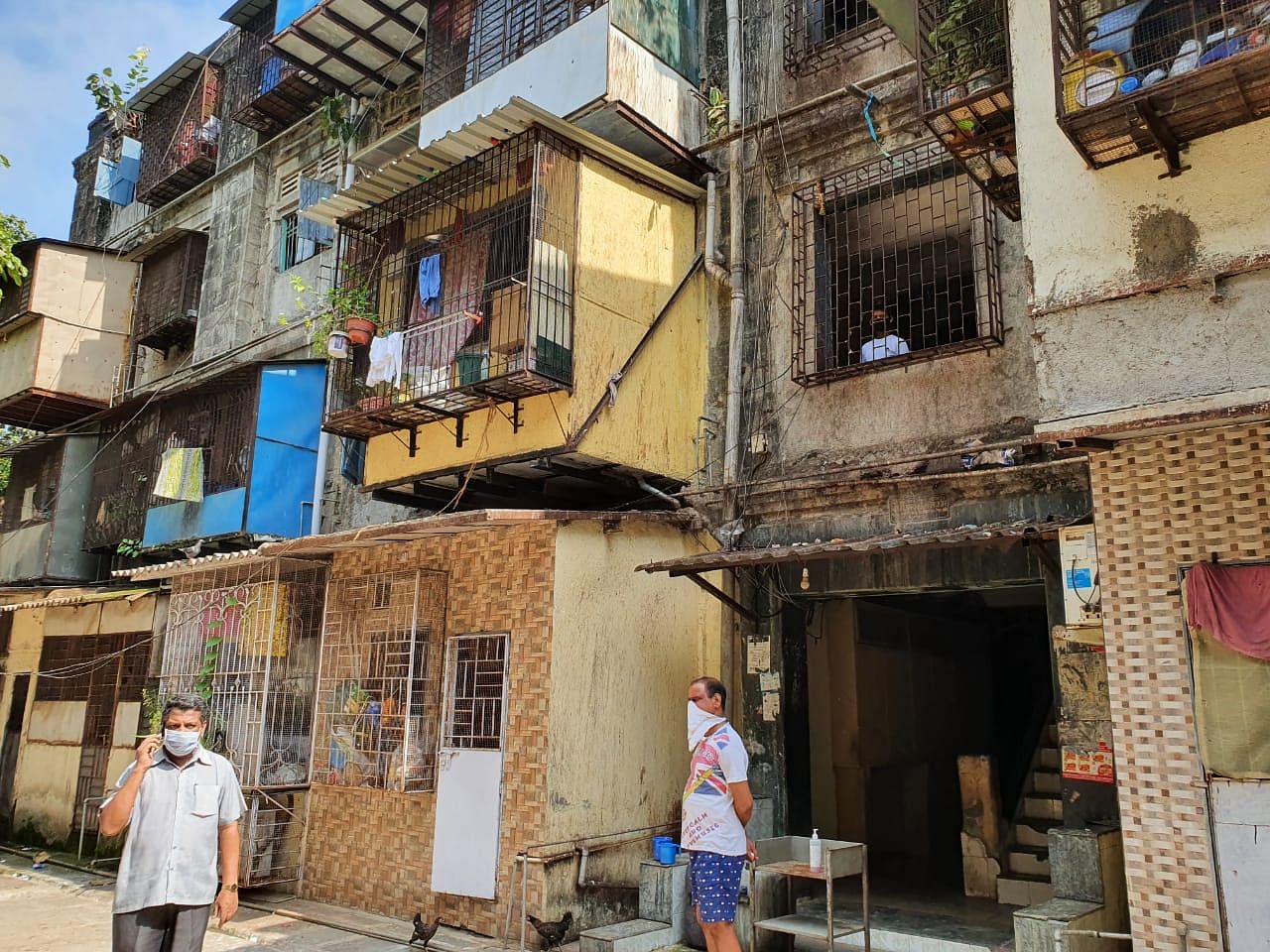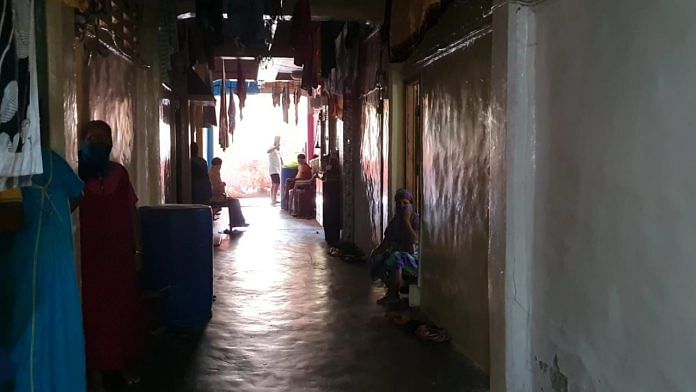Mumbai: A team of five doctors enters building number 87 of the Bombay Development Department (BDD) chawls in Worli and begins asking residents if anybody is sick and showing symptoms of fever and cough.
This was Friday, 15 May, when the area had 100 positive Covid-19 cases. The number has since gone up to more than 125.
“This is the first time that doctors have come for door-to-door screening,” Sutjata Torne, a resident of the chawl, told ThePrint Friday. Her mother-in-law Savitri Torne, 85, had had fever for the last two to three days. The doctors noted down her details and discussed the possibility of sending the elderly woman to quarantine at the Covid Care Centre set up by the Brihanmumbai Municipal Corporation (BMC).
Opposite the Torne household, a sticker announces a Covid-19 case in another house in the chawl, along with dates for home quarantine for those inside. A video journalist who tested positive was sent to hospital but his family had not been shifted to institutional quarantine, which should have been done according to norms. They had not been tested either with the BMC not following the Indian Council of Medical Research (ICMR) guidelines to test asymptomatic high-risk contacts of confirmed cases.
“We haven’t stepped out but it becomes very hot and stuffy during the day and then we have to open the door. But our neighbours get uncomfortable,” said the journalist’s sister, adding they never got any call from any health team to check for symptoms.
The two cases encapsulate the situation at the chawls of Mumbai, representative of the syncretic nature of the city, which have emerged as Covid-19 hotspots.


There has been an increase in the number of cases around the crowded chawls as they are beset by the same problems that afflict slums like Dharavi in the city — overcrowding making social distancing a difficult proposition.
As of May 16 evening, Mumbai had a total of 18,396 positive cases, according to the BMC.
#CoronavirusUpdates
16-May, 6:00 pm#NaToCorona pic.twitter.com/ofpgnvvRul
— माझी Mumbai, आपली BMC (@mybmc) May 16, 2020
Social distancing almost non-existent
The Bombay Development Department (BDD) chawls in Worli consists of 121 three-storey buildings, each housing 80 one-room apartments and are home to nearly 50,000 people.
As of Sunday morning, there were more than 125 cases in the area, according to officials in the corporation, with about 50 of the 120 buildings having at least one Covid-19 patient. The first positive case in the area was that of a police constable.
Though they contribute just a fraction of Mumbai’s 18,396 coronavirus cases — which is 21 per cent of the country’s Covid-19 burden — there are fears the crowded chawls could spark another spurt in the pandemic.
The BMC authorities claim they are unable to enforce the social distancing measures in the chawls because of overcrowding and non-compliance by the residents who keep stepping out of their buildings.
“Look at them, they are still not taking it seriously, they are not wearing masks and are still loitering around the road,” said Vijay Bhange, a local Shiv Sena leader and shakha pramukh. He has been coordinating with a team of doctors from the One Rupee Clinics — a private chain of clinics that provide subsidised treatment — to conduct door-to-door screening of houses for cases of flu and fever. Since April, the clinics have screened around 3 lakh people, supporting the BMC’s efforts.

“At the moment, people here fear being Covid-19 patients and hence they tend to hide their symptoms,” said Dr. Salman Khan, who works at a One Rupee Clinic.
The problems have been compounded by overcrowding.
The BDD chawls have been in the city since pre-Independence when the British built these “prison-like buildings” to accommodate migrants who worked in textile mills.
Now the buildings have aged and the number of families have only swelled. “Most houses have 7-8 members and very often 2-3 families also share one house,” said Bhange, adding that the rent for one home is a mere Rs 18 a month.
Each room measures 10×12 feet.
The problems of overcrowding are plenty — especially in a pandemic. Take building number 87 for instance. There are only six toilets shared by 20 houses on the floor, which has family members of the confirmed Covid-19 case. And these community toilets have been linked to spread of the infection in the nearby Dharavi slum.
The BDD chawls were earlier this month sealed for seven days to implement a strict lockdown protocol. With more cases emerging, the BMC Saturday sealed the area again.
“Earlier the BMC sealed the houses and there was door-to-door distribution of food ration but as the cases increased the administration stopped sealing the buildings,” said one of the local volunteers. After one and a half months of lockdown, people started heading outside for errands like buying grocery despite the warnings.
“We are doing the best we can. Because of large families and small houses and the heat, it is difficult to stay indoors and follow the measures,” said Maruti Nikavle, one of the residents.
The police took out a ‘request march’ Saturday asking people not to step out.
Also read: Flu data, vigilance, Aarogya Setu, Covid helpline — how NHA’s quietly leading pandemic fight
‘People don’t cooperate’
The BMC has conducted regular screenings in the buildings, opened fever clinics and has conducted 25 camps in the area, said Dr Satish Badgire, Medical Officer, Health, G South Ward. Yet people have been flouting norms and stepping out, he said, adding, “If people stay indoors even for three days, the transmission can stop.”
Surprisingly, the administration has left the issue of quarantine optional. “We try to convince high-risk contacts to come for institutional quarantine but many of the families refuse, we can’t force them,” Badgire said.
“This virus is going to be around, we want people to cooperate on their own accord but they are very resistant,” he added.
Badgire agreed that there needs to be more police presence to prevent people from stepping out but when ThePrint visited the area, there was not a single policeman patrolling the area.
Badgire said they are now recruiting a local volunteer team to ensure people stay indoors. Implementing such measures, two months after the pandemic affected the city, seems too little too late.
Also read: How well has Modi govt’s Covid strategy worked? Answer lies in 1 million+ tests done so far






